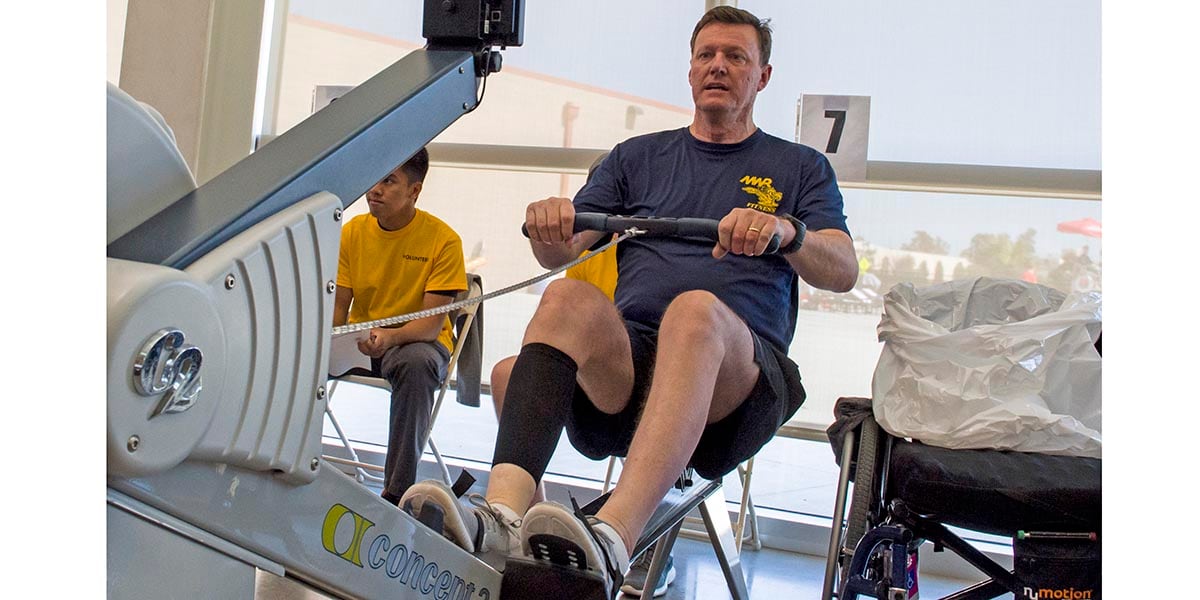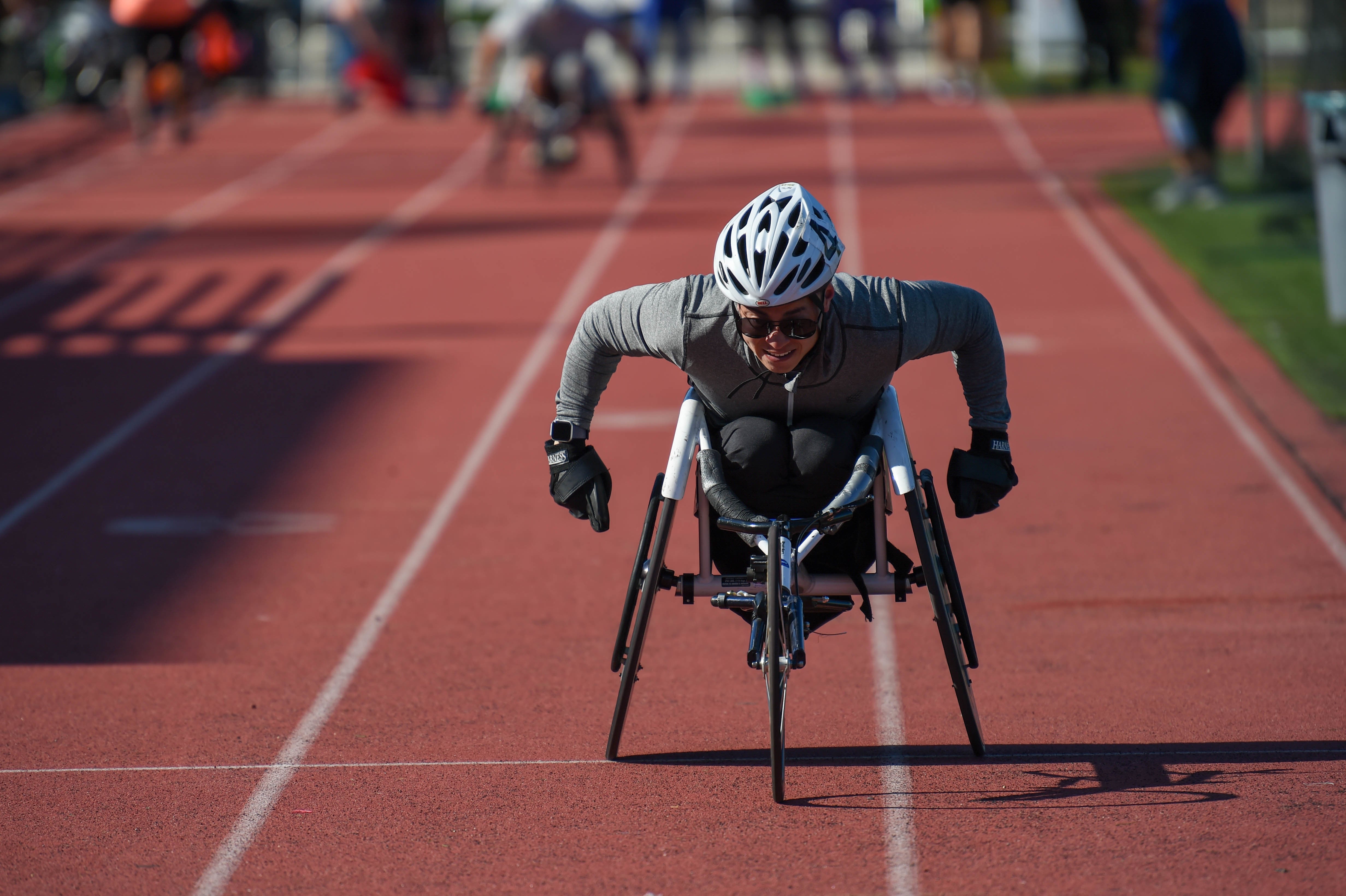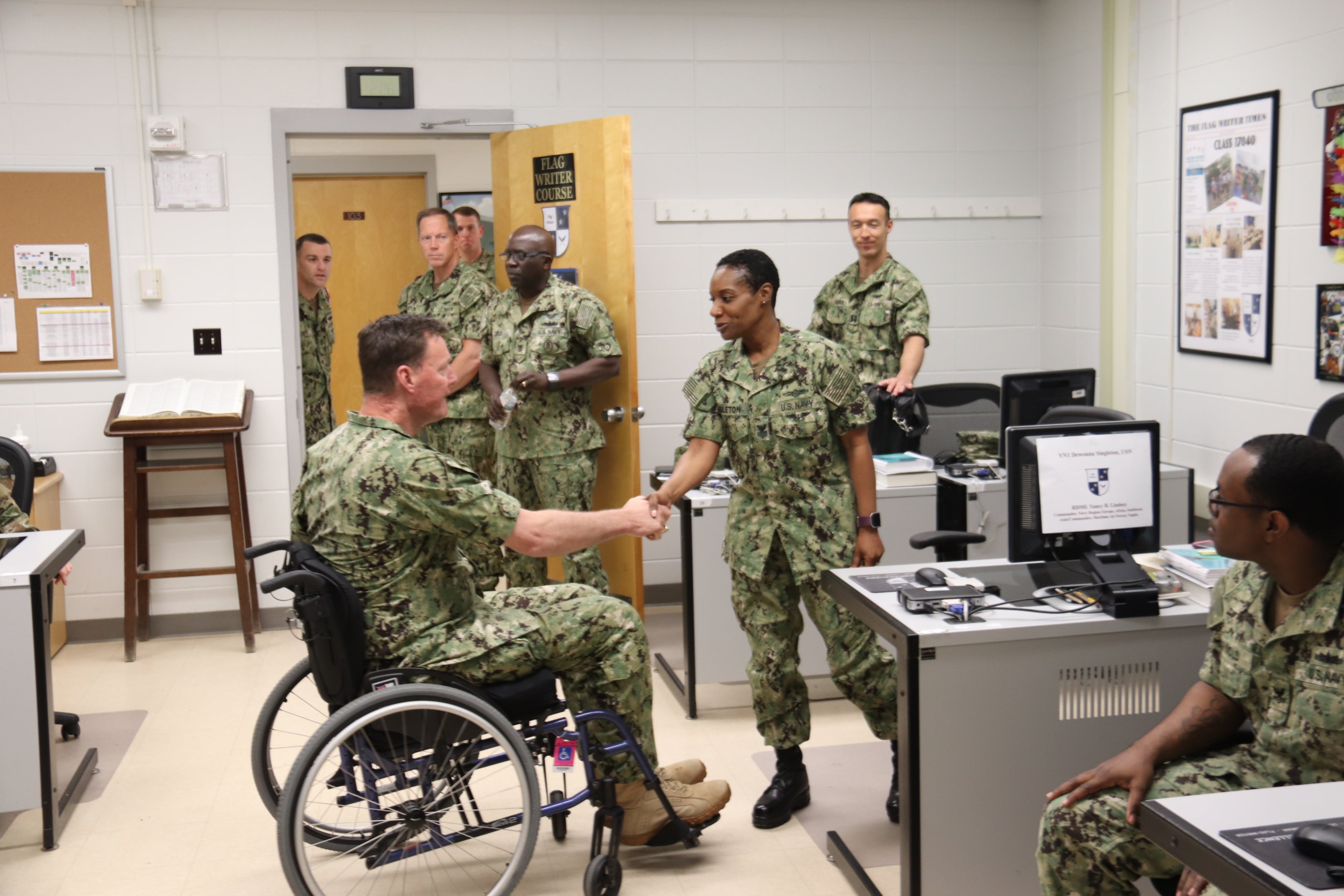A simple stroll across his kitchen altered Navy Rear Adm. Kyle Cozad’s life forever.
On March 16, 2018, he slipped and ended up “landing flat on my back, crushing two vertebrae,” Cozad, 56, told Navy Times.
Surgeons spent seven hours strengthening his spine with two titanium rods but he’d lost all feeling below his waist.
“I like to joke that I now have enough screws in my back to start a hardware store, but like so many other wounded warriors, nobody really expects to be put in a position like this,” said Cozad, a career aviator before he took the helm of Naval Education and Training Command in 2017.
Cozad told Navy Times that while he rested in the recovery room, his wife of 33 years, Amy, learned from doctors that he’d be "handicapped for life as a paraplegic and I’d never get out of my wheelchair.”
The Las Vegas native remembered later staring at the ceiling, pondering his future.
“I told myself that I could just lay in bed and feel sorry for myself and let other people do things for me or I can get after this and try to rejoin the fight," he said.
So he decided to fight.
“I decided that I’ll never let anyone tell me what I can’t do. I want to define what I can do,” he said.
He wanted to go back to commanding the Pensacola-based NETC, where he led the ongoing Ready Relevant Learning training transformation.
“I’ll be honest with you, I love the Navy," Cozad said. "I love the mission of what I do at NETC. And before me was the ultimate goal of being able to get back to work full time, being able to pick up where I left off before the accident, without any consideration for my mobility and how I get around.”
For a man who still has little feeling below his waist and uses “a wheelchair or a walker to get from point A to point B," he realized his reintegration likely wouldn’t lead back to a cockpit of a P-3C Orion maritime patrol plane.
Before he arrived at NETC, he commanded a squadron, wing and reconnaissance group. He also was the 22nd senior director of the White House Situation Room and led Joint Task Force Guantanamo.
But he had the support of his boss, Vice Adm. Robert “Bob” Burke, the Navy’s 58th chief of naval personnel.
“Kyle’s journey from his serious injury to leading Naval Education and Training Command is a truly inspirational story,” said Burke in an email to Navy Times.
“However, I know that Kyle would be the first to say that it has been the support of his wife, Amy, his family and the NETC staff, and the non-medical care he received from Navy Wounded Warrior - Safe Harbor that has gotten him to where he is today.”

Joining the ranks of the military’s Wounded Warriors — service members who are recovering from wounds, injuries or illnesses — introduced Cozad to a process.
Cozad’s medical odyssey already had involved an intensive care stay, plus another five weeks of in-patient rehabilitation, and then more rehab.
“Every day I’ve worked hard on taking one more step than I did the previous day or increasing my balance standing up unassisted or 10 second longer than I did the day before,” he said.
But there’s also a non-medical component process and it’s what the Wounded Warrior -Safe Harbor program does.
It’s designed to tailor each service member’s recovery and reintegration needs so that they and their families don’t struggle with distractions.
And that’s where Cozad discovered “adaptive sports,” ways to stay physically active while adjusting to a disability.
He watched other Wounded Warriors find sports that helped the recovery process by giving “them the confidence that they can do these things,” along with the fellowship of others, a “mutual support network” of men and women "who define for themselves the boundaries from their injuries.”

In February, Cozad attended a Navy-sponsored adaptive sports camp in Florida with 15 other recovering sailors.
He’d played basketball in high school and a couple of years on the junior varsity team at the U.S. Naval Academy, but that was more than three decades ago, long before his injury.
“I had a chance to row and cycle and play seated volleyball,” he said. “I’d never played volleyball before or rowed.”
He performed well enough to become one of the 55 sailors invited to March tryouts in Coronado, near San Diego, for this summer’s Warrior Games.
The Pentagon launched the Warrior Games in 2010 to introduce wounded, sick or injured members of the armed forces to the kinds of sports featured in the Paralympics.
Today, it includes competitors from the Netherlands, Australia, United Kingdom, Canada and Denmark, too.
In San Diego, Cozad strapped himself into a large platform and tried his hand at field events.
He credits the hard work of “some great coaches” for improving his discus throw by “almost 13 feet.”
He’d never tried tennis before his injury, but now he found his evolving “chair skills” and “wide wingspan” made him a natural on the court — even if his high rank and age stood out.
“They told me that I was without a doubt I was the most senior person and the oldest person out there,” Cozad said.

On April 8, Cozad learned that the Navy selected him to the 40-sailor roster to represent the service for this summer’s Warrior Games.
Cozad jokes that he’s probably the “oldest rookie” on the team, but he’s also developed a “secondary passion" that’s driven him to try to become a spokesman for the entire program.
And for any naysayers who doubt an admiral can lead from a wheelchair, he points to World War II and the commander in chief for the bulk of the conflict, Franklin D. Roosevelt.
“We had a president who ran the country from a wheelchair,” Cozad said. “I figure I can do something like run the Naval Education and Training Command just as well as he did.”
Mark D. Faram is a former reporter for Navy Times. He was a senior writer covering personnel, cultural and historical issues. A nine-year active duty Navy veteran, Faram served from 1978 to 1987 as a Navy Diver and photographer.




